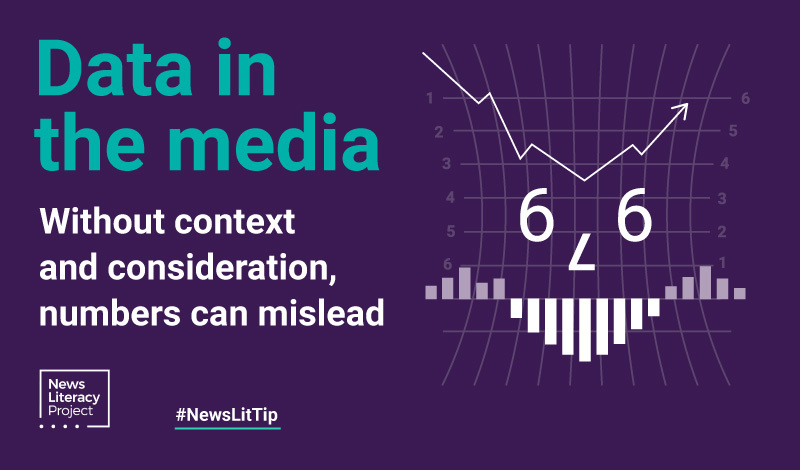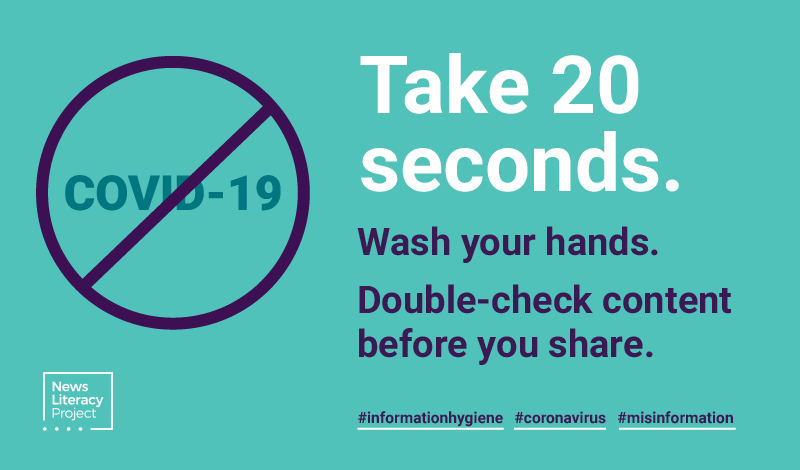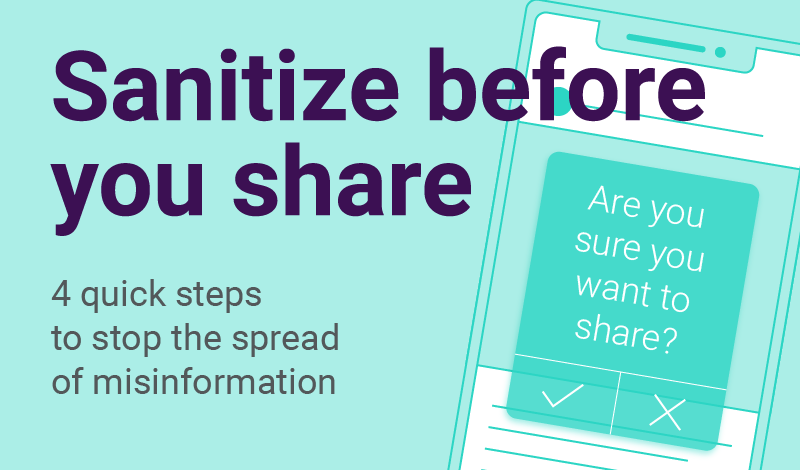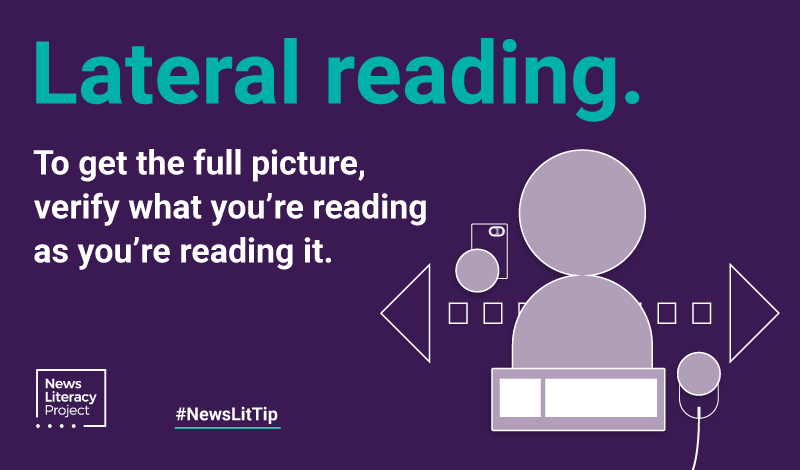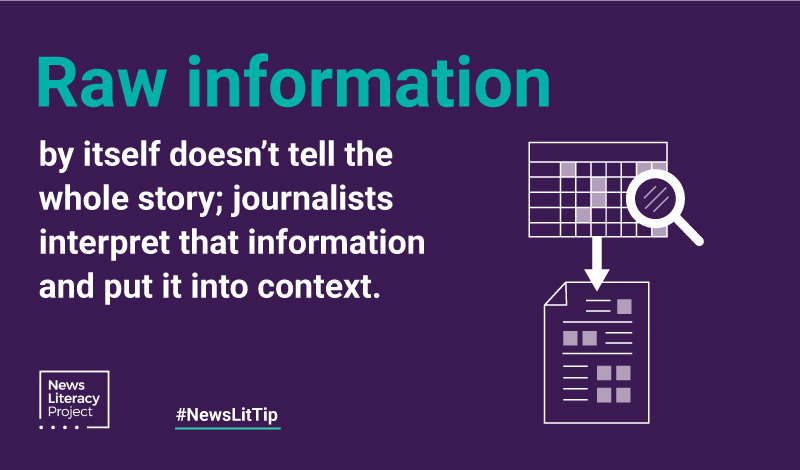
News Lit Tips
Look: The steps of sleuthing for accuracy
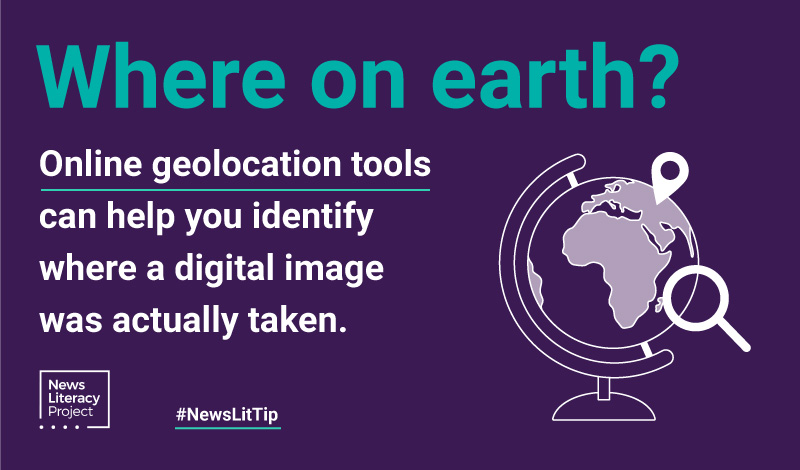
How do you know that the image you’re seeing online is truly what someone says it is? There are ways to suss out the facts.
- Look.
- Look again, more closely.
- Look at its origins.
- Look at it from a big-picture perspective.
Taking those four steps can help you discover whether an image is what someone says it is — so you’re not fooled into believing or sharing misinformation.
- Look. Observe the details. If the caption says that the event depicted is happening in Miami, you shouldn’t see heavy winter coats. If you’re told that the building you’re seeing is in London, there shouldn’t be cars with license plates from U.S. states.
- Look again. Take one of those details you’ve spied — a store name or a street sign — and search online to confirm its location. There may even be elements in the image — for example, a state flag in the distance — that you can zoom in on to nail down the location.
- Think backward. Conduct a reverse search. It’s particularly easy if you’re using the Chrome browser: Simply right-click on the image and choose “Search Google for Image.” If you’re using another browser, you can upload the image (or copy its URL) into TinEye. You might find dozens of webpages that include the image and confirm its origin (for example, a news service photo published by credible news outlets).
- Geolocate! You can also use Google Street View, a photographic feature that lets you virtually stroll much of the world. To learn more about this, use First Draft’s resource on geolocation, for that is what you’re doing: figuring out, or verifying, where on Earth the image you see posted online was taken.
First Draft, an international nonprofit addressing issues of truth and trust in the digital age, also has an overall primer that lets you hone your powers of observation by giving you the opportunity to practice your online sleuthing skills.
The most important step to take to know what’s real, of course, is the one that leads you to these investigative tools to start with. It’s taking the time to ask: Is that for real?
